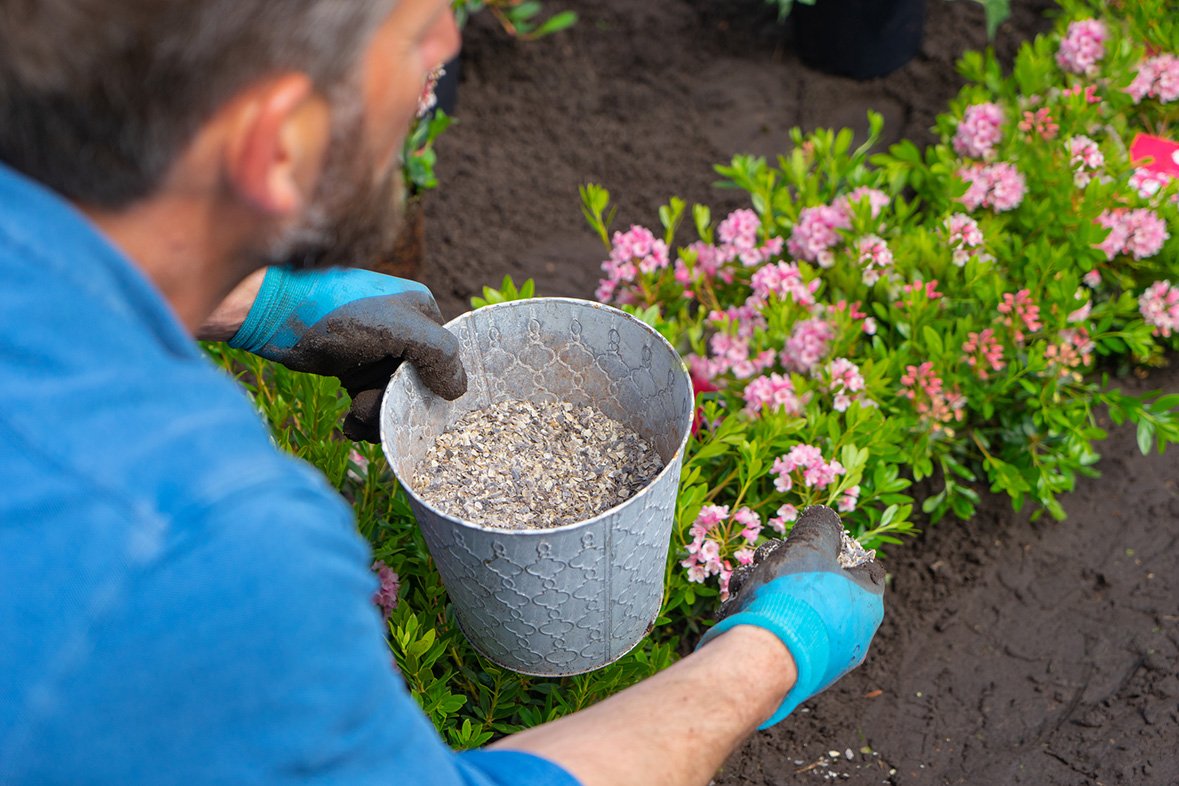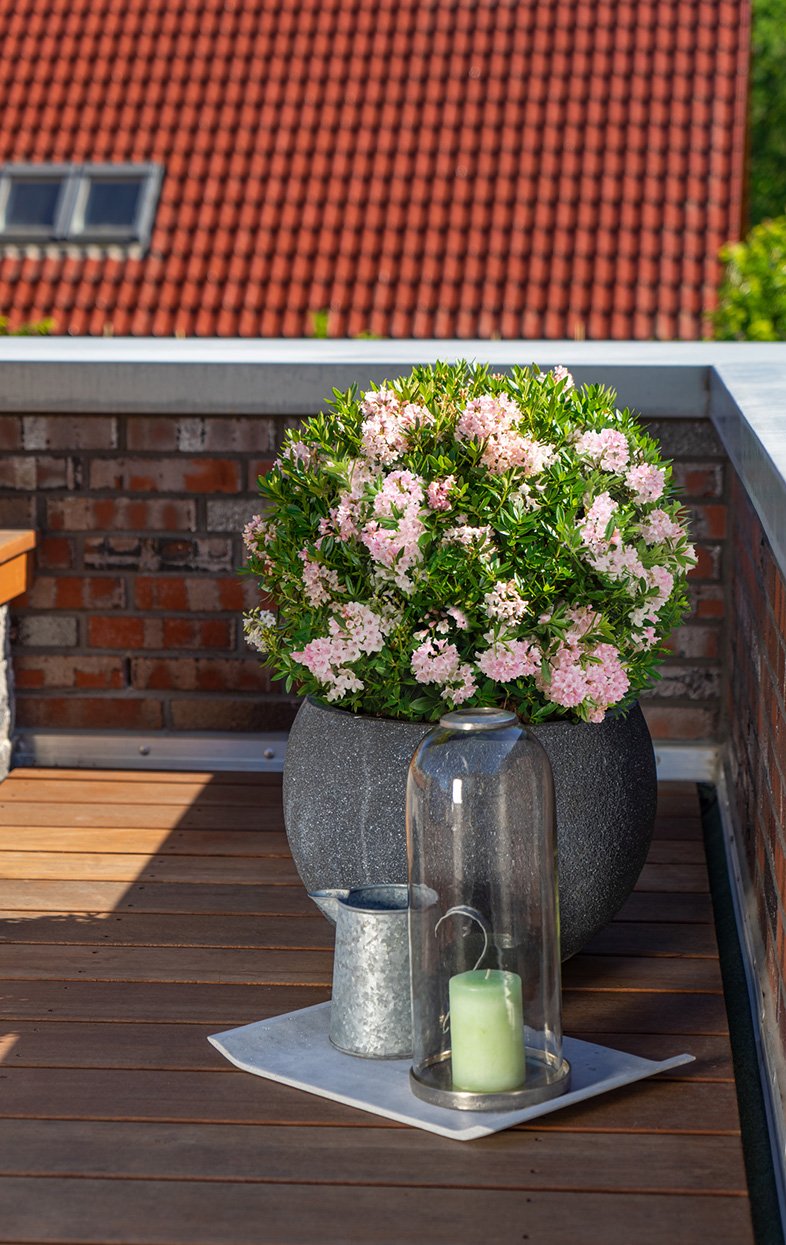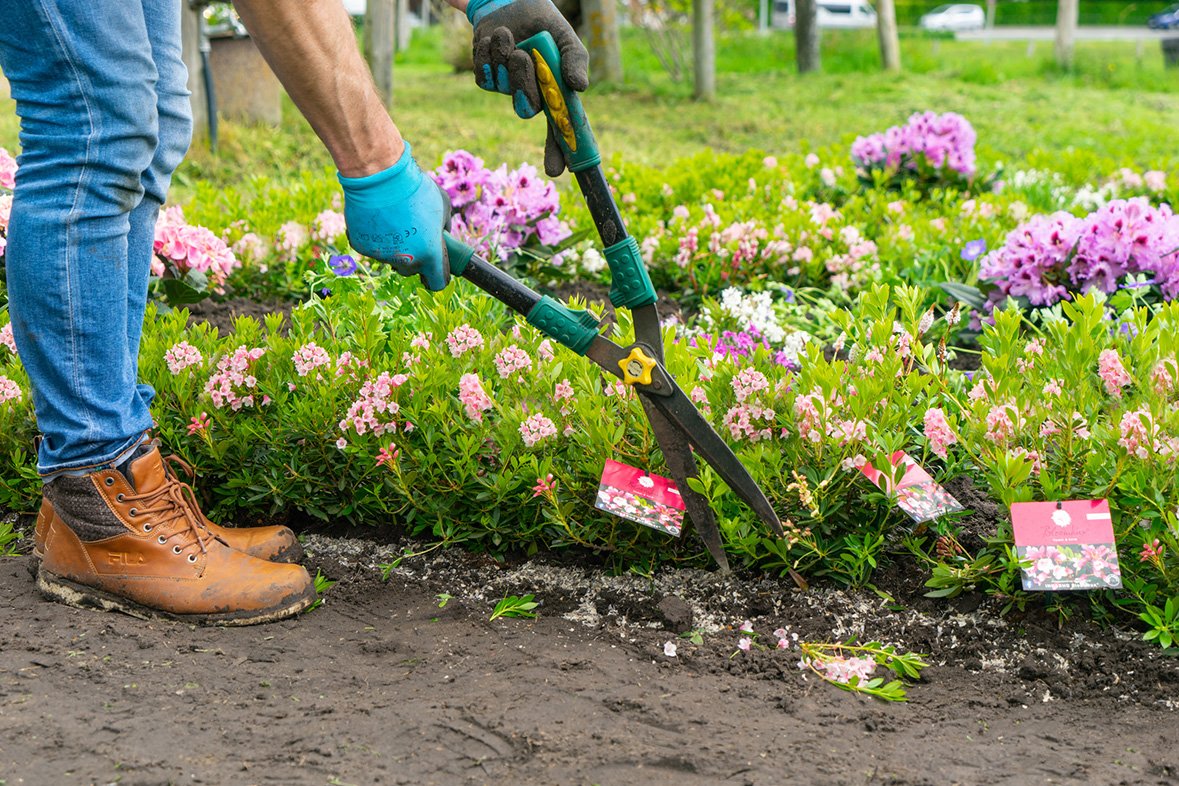The care is very important when it comes to the classic Buxus. Whether designed as a dense, evergreen hedge or as an individual topiary – with the right boxwood care, the popular plant becomes a real eye-catcher in any garden as well as in green spaces and parks. But boxwood care not only includes regular pruning of the plant: In terms of fertilizing, watering and choosing the right location, there are also several things that need to be considered with Buxus. In addition, boxwood has been increasingly affected by diseases and pests in recent times. Those who do not want to worry about the comprehensive care of boxwood are often better advised with a Bloombux. Our Bloombux is not only easy to care for and tolerant to pruning, but also resistant to many boxwood diseases and pests. We will reveal all important information about the correct boxwood care as well as tips for those who want to prune a boxwood or shape our Bloombux in the following.



Fertilising a box tree: How do I care for a box tree correctly?
If you want to take proper care for a box tree, you should begin by choosing the right location. The Buxus feels comfortable in sunny and semi-shady places. There is a risk of fungal infections in locations that are too dark and moist. In terms of soil quality, the box tree loves calcareous soils with a high clay content. Avoid waterlogged soils.
Attention should be paid to the correct procedure when fertilising a box tree. In particular organic fertilisers, such as compost can improve the soil ensure part of the box tree's nutrient requirement. Slow-release fertilisers that release the nutrients gradually are also suitable. This way you will need to fertilize the box tree less often and have less work with the plant.
The Bloombux® Pink & Magenta is also economical when it comes to fertilising and is clearly flexible, especially with regard to the location: Our Bloombux® can also thrive in sunny locations and is tolerant with regard to soil conditions: whether calcareous, sandy or marshy - no matter what soil conditions prevail in your region, the necessary conditions can be easily adapted to Bloombux®.



Info: The Bloombux® is not only very adaptable in terms of soil conditions, but also insensitive to classic box tree diseases and pests. The box tree moth, as well as many other known box tree pests and diseases have no chance on the Bloombux®. This new breed is particularly robust and durable.

Pruning a box tree: When should the box tree be pruned?
Ornamental gardens with box trees in a striking topiary are more in demand today than ever before. Various shapes to which the box tree can be trimmed are the ultimate trademark of the evergreen plant. The following aspects should be considered when pruning a box tree.
Maintenance pruning can be carried out throughout the entire growing season. However, it should be borne in mind that pruning in spring can require two to three follow-up trimmings under optimal growth conditions. If the tree is cut for the first time in June, one additional trimming is usually sufficient. Strict shapes should always be “styled” several times a year. A very late trimming at the end of August/beginning of September can lead to new shoots not hardening in time and being damaged in early frost. Sharp cutting tools and precise work are crucial for pruning. Torn or crushed shoots can cause long-term damage.
The Bloombux® Pink & Magenta can also be shaped individually: It is up to you to decide to work freehand or use a template. An advantage of our Bloombux® over the conventional box tree: Its shape is more stable. However, it is important, that the pruning takes place immediately after the plant has flowered. Otherwise you might cut off the buds that have already developed for the next year. It is recommended to prune the Bloombux® between mid-June and early July.
Torn off or crushed shoots can cause long-term damage. Bloombux® Pink & Magenta can also be individually shaped: Whether you work freehand or with templates is up to you. One advantage that our Bloombux® has over the classic boxwood is that it is more dimensionally stable. However, it is important that the pruning is done directly after the plant has flowered. Otherwise you may already be cutting off next year's flowers. We recommend pruning the Bloombux® between mid-June and the beginning of July.

Care for the box tree on the balcony: How do I care for a box tree in a planter?
Just like our Bloombux® Pink & Magenta, a box tree can thrive both in a tub and outdoors. The same basic care, fertilising and pruning conditions apply as for the box tree.
Vores alsidige Bloombux® Pink & Magenta kan ikke kun bruges som en velformet hækplante, men trives også glimrende som containerplante. Derudover har Bloombux® mange andre fordele, herunder den attraktive blomstring i maj og juni, som sætter den klassiske Buxus i skyggen. Hemmeligheden: Selv om Bloombux® pryder sig med buksbomtræets mange attraktive træk, er det en rhododendron.



